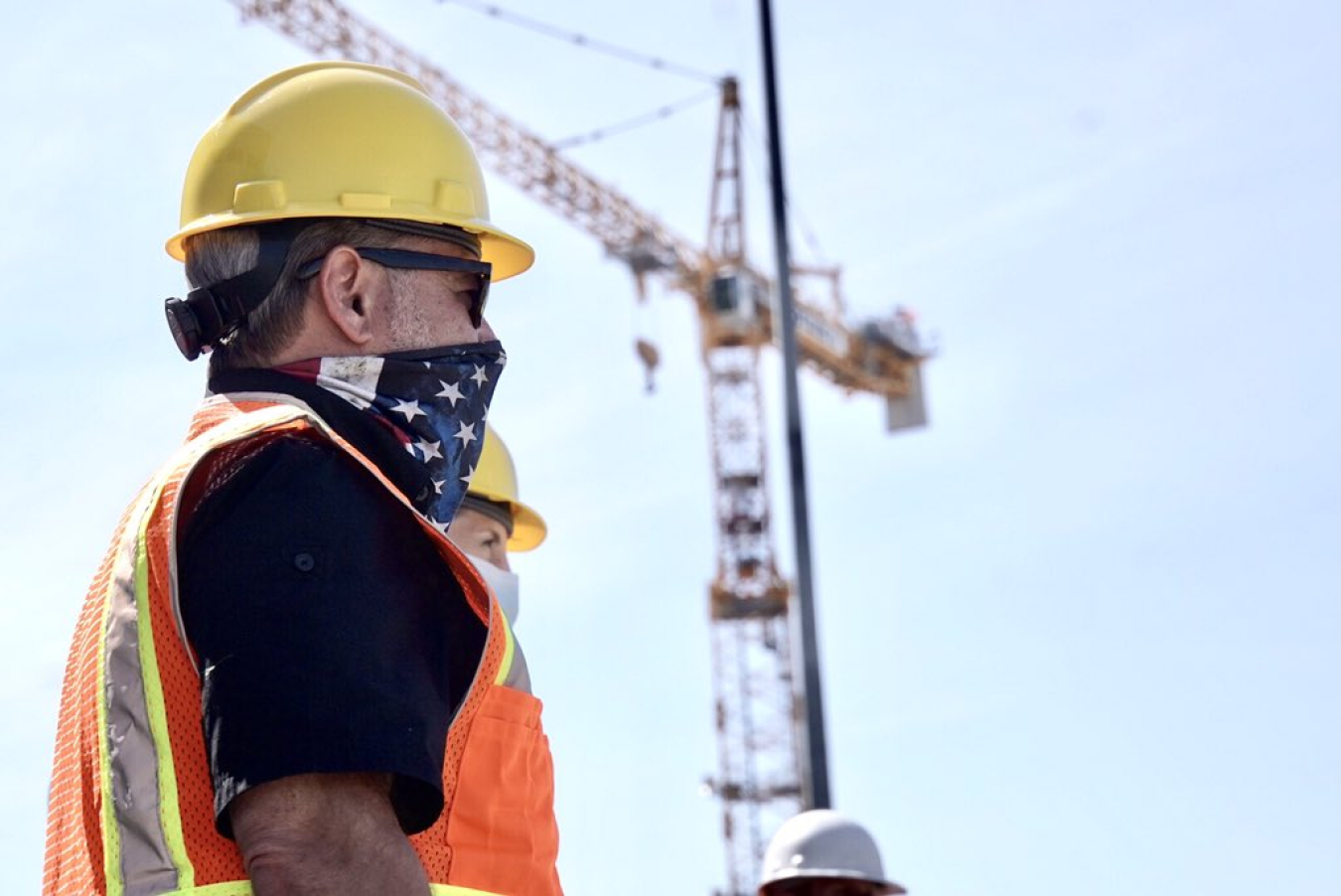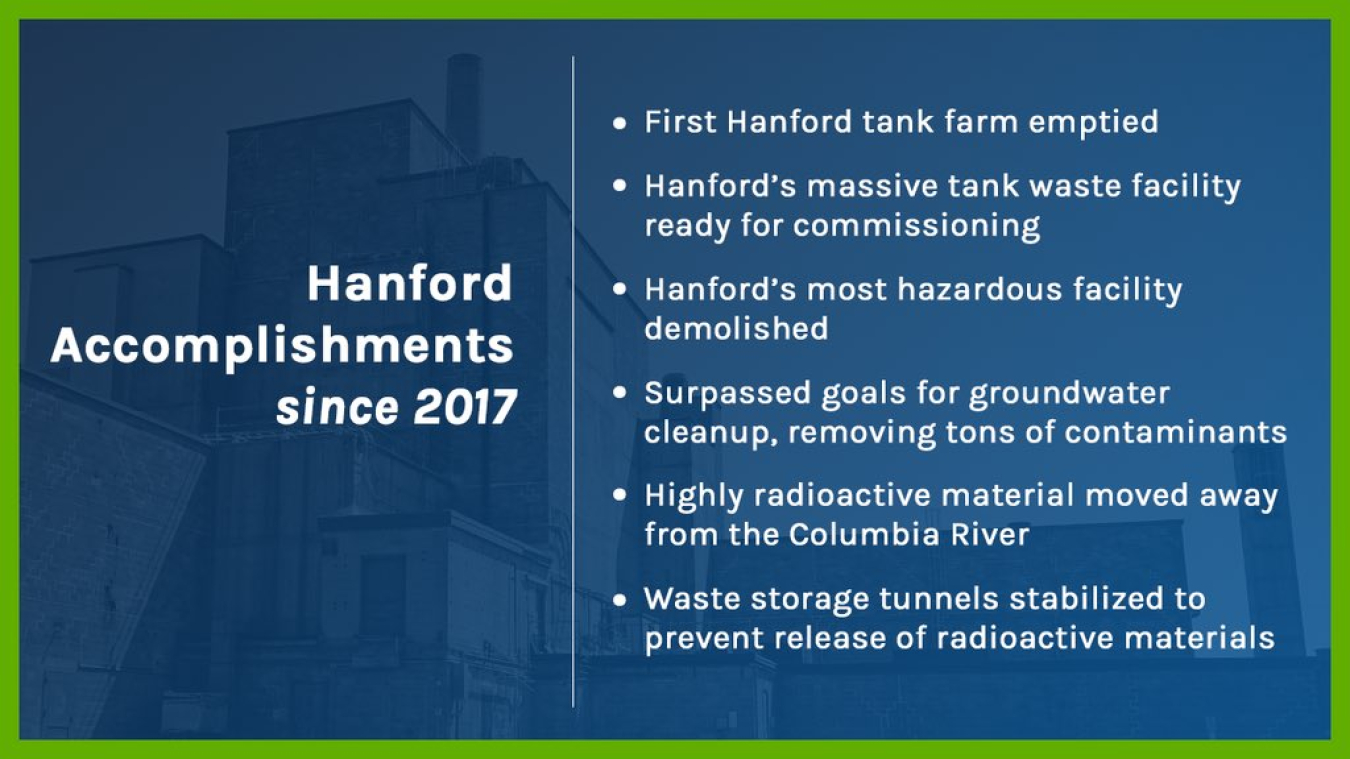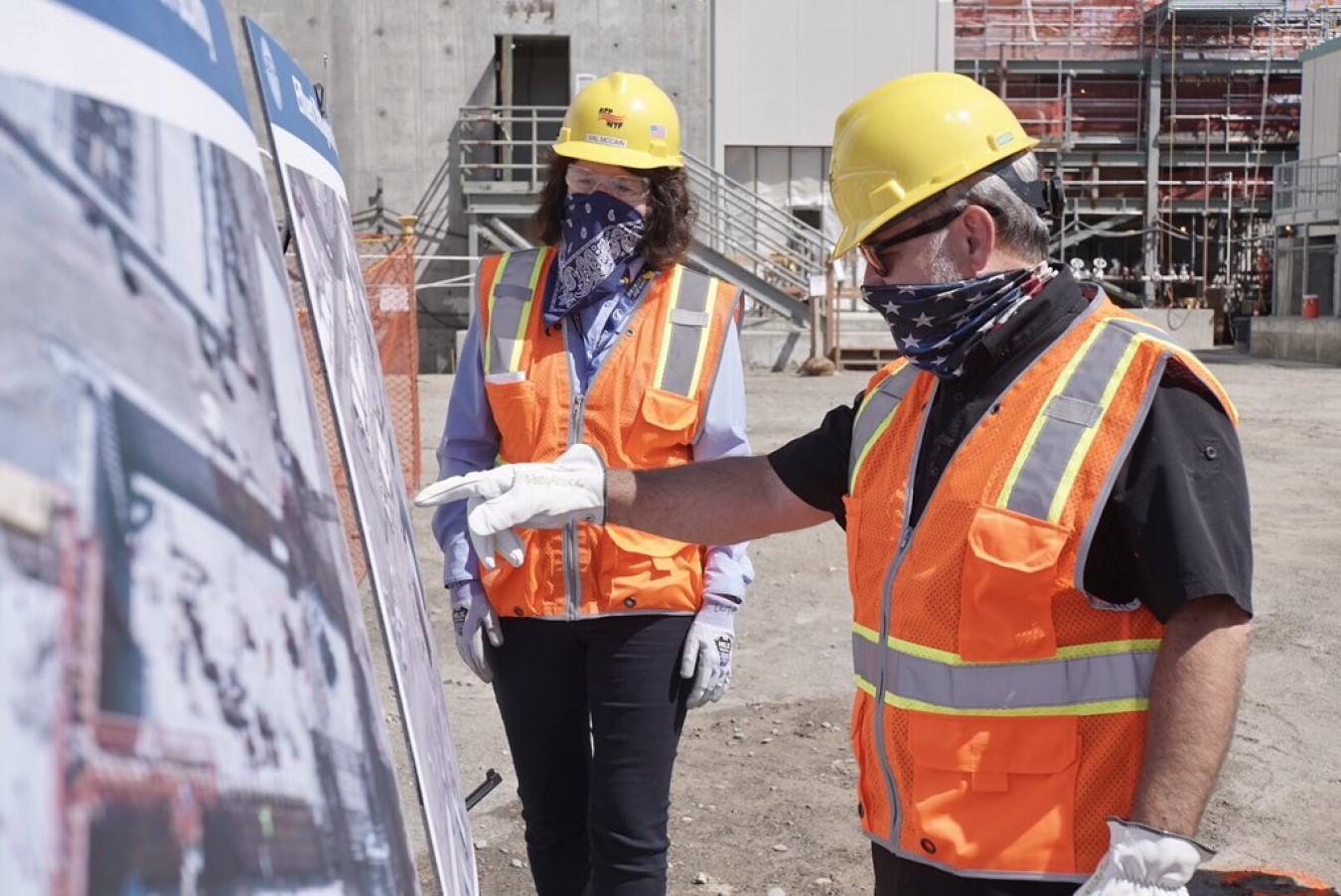A summary of accomplishments at the Hanford Site since 2017
August 18, 2020By Dan Brouillette, Secretary of Energy
When Americans think of the events that led to the end of World War II, they probably think of Midway, Normandy, and the bombing of Hiroshima and Nagasaki. Likewise, when asked about the downfall of the Soviet Union after decades of Cold War, they probably mention the Berlin Airlift, Cuban Missile Crisis, the Berlin Wall, and the events of 1989.
But few people realize that a group of workers on a piece of land along the Columbia River in southeastern Washington provided the technological superiority that allowed the United States to triumph in two of the most critical moments of the 20th Century.

Hanford's New Mission
Beginning in 1943 and running through the end of the Cold War, the plutonium that bolstered America’s defense program was produced at Washington’s Hanford Site.
Unfortunately, the important work that helped secure our future resulted in a great deal of waste being left behind. Since 1989 the Department of Energy’s (DOE) Hanford Site has focused on the mission of clean up and environmental management.
This new mission is costly and time and labor intensive. It involves cleaning up several different kinds of waste in multiple forms. The Cleanup must be done in ways that are protective of the workforce and surrounding communities, as well as the air, the soil, and the Columbia River.
While work has been overseen by every presidential administration since Ronald Reagan’s, recent progress made under the Trump Administration is so significant that it deserves attention.
Hanford Cleanup Progress
First, Hanford’s most hazardous facility was demolished. The Plutonium Finishing Plant (PFP) was where most of the country’s supply of plutonium for nuclear weapons was produced. Over the past 20 years, the plant was cleaned out and prepared for demolition. Earlier this year, the last of the buildings that made up the PFP complex were demolished. This significant cleanup accomplishment reduces risk to the Hanford workforce and surrounding communities. Next, radioactive material was moved away from the Columbia River. In September 2019, Hanford workers finished transferring 35 cubic yards of radioactive sludge from a reactor basin near the Columbia River to a safe storage location in the center of the site. This project eliminated a significant risk to the river and surrounding communities and will reduce Hanford’s annual operating costs, so that DOE can focus resources and attention on our next big priorities.
Third, the PUREX contaminated equipment storage tunnels were stabilized to prevent the release of radioactive materials. In 2017, and again in 2019, workers finished filling two radioactive waste storage tunnels with engineered grout to reduce the risk of the tunnels collapsing and releasing radioactive materials into the environment. Grout was chosen as the best material for this project because it provides the highest levels of stability and protection and does not preclude future remedial actions, an important risk reduction action at the site. Finally, DOE surpassed goals for groundwater cleanup and contaminant removal. Over the past four years, workers operated six separate facilities that treated more than 8 billion gallons of groundwater and removed more than 300 tons of contaminants, surpassing cleanup goals every single year. This work also reduced areas of contamination near the Columbia River.

Hanford’s Future
The next big step DOE will take at Hanford is tank-waste treatment. In 2017, workers finished removing radioactive and chemical waste from 16 underground tanks where chemicals used in plutonium processing were stored. Within the next few years, Hanford will begin treating the tank waste, allowing for the safe processing of this decades-old waste and addressing the largest environmental risk at the site. As this work progresses, the DOE will continue to engage with stakeholders, regulators, Tribal Nations, labor organizations, and state and federal elected officials regarding the work being done at Hanford.
We also recognize that the state of Washington and DOE’s Pacific Northwest National Laboratory (PNNL) are stepping up to continue the legacy of Hanford’s service to the nation by addressing the national security challenges of the future. At PNNL, a team of scientists and researchers are doing groundbreaking work in cybersecurity, energy infrastructure, and electric grid storage to keep our country secure. The Hanford Site and its workers kept America safe during some of the gravest moments we faced as a nation. Now, DOE is demonstrating its commitment to the Hanford workforce and surrounding community by completing cleanup activities in a safe, timely, and cost-effective manner.

This text was originally published in The Tri-City Herald on August 12, 2020.
Photos provided by United State Department of Energy.
Dan Brouillette
Dan Brouillette, Former Secretary of the U.S. Department of Energy

Dan Brouillette served as the 15th Secretary of the U.S. Department of Energy. Secretary Brouillette has three decades of experience in both the public and private sector. Most recently he was the Deputy Secretary of Energy.
He also served as the Senior Vice President and head of public policy for USAA, the Nation’s leading provider of financial services to the military community. Before joining USAA, Secretary Brouillette was a Vice President of Ford Motor Company, where he led the automaker’s domestic policy teams and served on its North American Operating Committee.
At Ford and USAA, he was part of senior management teams that helped bring to market innovative technologies like auto collision avoidance and remote deposit capture, a technology invented by USAA that allows the use of smart devices to deposit funds into our banking accounts.
Before his transition into the private sector, Secretary Brouillette held numerous positions in government. He was Chief of Staff to the U.S. House of Representatives Committee on Energy and Commerce, which has broad jurisdictional and oversight authority over five Cabinet-level Federal agencies. He also served as Assistant Secretary of Energy for Congressional and Intergovernmental Affairs from 2001 to 2003. In addition, he is a former state energy regulator, having served as a member of the Louisiana State Mineral and Energy Board from 2013 to 2016.
Secretary Brouillette and his wife, Adrienne, are both U.S. Army veterans and have been married for 28 years. They hail from San Antonio, TX, and have nine children.


